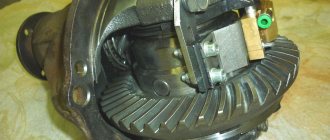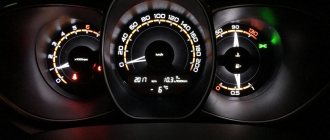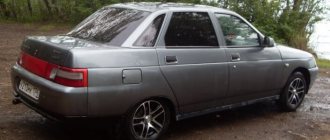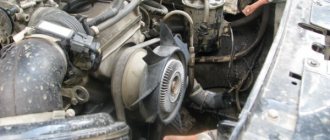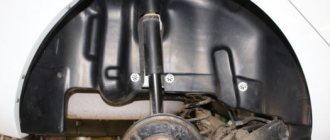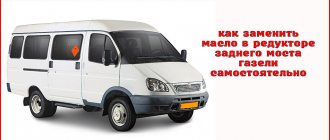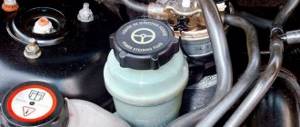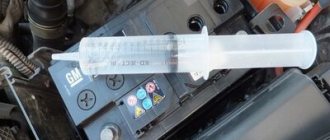The Chevrolet Niva is one of the few Russian-made SUVs that, in addition to excellent cross-country ability, can also boast a relatively modern design. Therefore, it still enjoys well-deserved popularity in the market.
The Chevrolet Niva owes its good off-road characteristics to its predecessors - the VAZ2121, namely permanent all-wheel drive, with the possibility of forced differential locking. But before setting up the transfer case and using the gearshift levers correctly, you must first understand how this mechanism works and what happens during its operation.
The transmission of this type of car consists of several main components: cardan, gearbox, transfer case and axles. The main component in the bridge structure is the differential. If it were not there, the wheels would rotate at the same speed, which would lead to wheel slipping and excessive load on the axle. The presence of a differential allows you to avoid destruction of the axle due to the fact that when turning, torque is transmitted to one of the wheels.
The design itself provides for the transmission of torque to the wheel, which experiences less traction with the surface. Therefore, for example, a wheel that stands on ice or sand will spin faster than one that stands on asphalt.
The Niva design provides for the presence of three differentials. This is due to the presence of permanent all-wheel drive in the car. If the same force were transmitted to all wheels, then the car could only move in a straight line. But when turning, the forces between the wheels are distributed unevenly. Accordingly, two bridges connected to each other will invariably experience increased loads that can destroy the structure. There are some SUV models that do not have a center differential installed, but they use other technical solutions, such as clutches or all-wheel drive is not permanent.
What is forced differential locking?
It is only necessary in cases where, for example, only one of the 4 wheels will rotate. For example, when hanging horizontally, one wheel will be raised and maximum torque will be transmitted to it. In this case, all-wheel drive will be automatically disabled. Therefore, a forced differential lock is installed on the Niva. But it should only be used in off-road conditions. You can turn it on by moving the small lever forward.
The changes introduced by the American concern GM to the transfer case turned out to be quite minor. But at the same time they radically changed its structure. Compared to the old Niva, the need for an additional lever has disappeared and there are only two of them left. The modified location of the transfer case supports made it possible to reduce the vibration load on the body, thereby significantly reducing the noise level from the transmission.
Differential Lock VAZ 2109 Do It Yourself
A do-it-yourself differential lock on a VAZ 2109 will help the motorist increase the size of his SUV. At least some drivers must drive on roads that are indistinguishable on level ground. Most of them not only have no idea that their cars have special locks, nor do they know what they need. The undeniable advantage of the device is its simplicity. Its design includes:
- body parts. 2 pcs.;
- half-axle transmissions. 2 pcs.;
- satellite gears. 10 pieces. (when purchasing, please note that they all must be cylindrical);
- delimiter.
When the car is moving on a level surface, the differential lock works like a normal differential lock. The process is that the side gears begin to rotate at the same speed. With the help of satellites, torque is simply transmitted with equal force to both wheels at the same time, with the entire structure rotating along with the body.
ARB cabinet overview
Most often the differential locks when entering the ARB Air Locker. By its type, this is a lock that must be turned on forcibly. When the device begins to operate, a rather narrow short axis of axles appears between some parts of the bridge. This particular type of blockage is considered more severe.
READ How to Check the Starter Retractor Relay of VAZ 2109
The equipment includes the differential itself, an air compressor and pneumatic lines. They are needed to apply the pressure necessary for work. It must exceed two atmospheres, only in this case the lock is closed.
The differential locking system in question has one significant advantage, which is the smooth operation of a conventional hardcover differential.
In addition, it allows you to balance more comfortably. Naturally, the system has disadvantages, the main one of which is considered to be a very significant price. Negative points include the use of certain functions and the rather complex installation function.
Self-installation of the device
To install the lock yourself, carefully remove one of the axle gears located in the differential housing. To do this, you will need to rotate the pinion axis 90° and remove the gear from the housing. Then remove the ring from there, after which the pinion axle will be removed from the differential housing.
Remove the bolts that secure the gear to the housing and press down. It is useful to remove the differential bearings using a puller. Please note that bearings may break during this procedure. It is important to remember that the parts selected at the factory are mated. Consequently, all transmissions are the same in terms of noise and point contacts.
READ End of Race Xfinity Crash Sees Brandon Jones Steal Victory at Darlington
Therefore, when changing gears, you will also need to work on the secondary shaft drive of the gear. These items are sold in pairs only. To check comparability, calculate the number of gear teeth.
The undoubted advantage of a hard lock when installed on a VAZ 2109 is that the installation will be relatively heavy, which in the future will only be beneficial to the owner of the car. Due to some installation difficulties, additional reliability is provided.
Particular attention should be paid to the fact that under no circumstances should you install a locking system on the front axle of a VAZ 2109, as a result of which the car simply loses its maneuverability.
Note to driver
If you forget to engage the differential lock while on a hard road surface, you may lose control of the vehicle or break the transmission. Moreover, a hard lock has certain requirements for the car. To increase the cross-country ability of the VAZ 2109, install tires with the deepest tread.
If necessary, the differential lock can be controlled via a non-differential axle. Of course, this cannot be considered a real lock for the VAZ 2109. The device is a drum in which a differential is installed instead of a regular differential. In particular, it has a drive mechanism used for the final drive. As a result, the axes are in constant interaction with each other.
READ How to Remove the Center Console on a Priora
The initial disadvantages of the system are the rather sharp wear of the tires when using it. In addition, the loss of high-quality maneuverability and significant load on the box is absolutely negative. This will become more noticeable as the car is driven onto the road several times after installing the device.
Coming out of a turn, you refuel, the car will slide in the appropriate direction. Naturally, such a manifestation of the differential locking action cannot be directly attributed to a certain category of positive or negative impacts that the technical characteristics of the car have.
In any case, if you have not used the system described above, you will have to get used to operating the machine for some time.
Source
Differential lock
Forced blocking not only complicates the design but also automatically makes it more expensive and less reliable. But if you install a differential lock yourself, this is usually caused by the desire to replace the standard differentials with a forced locking mechanism. This can negatively affect the operation of the transfer case, so it is necessary to select those parts that will be compatible specifically with the Chevrolet Niva.
At the moment, among the solutions presented on the market, the most popular are those made on the basis of:
- pneumatics
- electronic control
- self-locking
Each of them has both advantages and some disadvantages in operation.
Types of limited slip differentials
Disk . No preload, which means it doesn't have smooth tension. The drive wheels begin to rotate simultaneously, but without tension, all starts will be accompanied by impacts on the steering wheel.
Screw . Unlike a disk one, there is already a smooth tension, which does not affect the steering wheel so much. Such self-locking differentials are often installed on front-wheel drive cars, for example, VAZ 2110.
For the VAZ 2121 SUV, the most popular are DAK and DAN:
DAK (Differential Automatic Krasikov). Belongs to the family of automatic ball differentials and provides full locking and evenly distributes the load. According to reviews, its service life is reduced when operating without load, and a hum may appear. An excellent option for installation in a plug-in bridge.
DAN (Nesterov Automatic Differential). This continuation of the DAK allows not only to differentiate the angular speed of the driving wheels of the car during its maneuvers, but also to gently redistribute torque from the engine to the driving wheels.
Self-locking system
Can be configured to the required switching threshold. This can be either a slight slip or uneven distribution of torque among the wheels. Such a connection is not rigid, and therefore does not place unnecessary load on the interaxial connection.
When installing a forced locking system on a Chevrolet Niva, you should remember that a constantly turned on system can put unnecessary stress on the transmission, so you should turn it on only when overcoming difficult sections of the road.
How to lock a differential with your own hands?
Most new cars are equipped with a differential lock. Some of the older models also have this mechanism, but these are mainly SUVs and trucks. But today, every self-respecting manufacturer, for greater vehicle cross-country ability over rough terrain and in bad weather conditions, supplements the drive system with this mechanism.
As a rule, it is installed on the rear axle, but more and more often you can find cars with locking front and rear wheels. Electronic differential locking has become a fashion trend. The benefits of the system cannot be overestimated; it is not for nothing that many car enthusiasts install it on cars that were not originally equipped with the mechanism. To get excited about this idea, it is enough to experience the difference in driving with and without torque limitation. Or at least see how these cars will behave in difficult road conditions. But first, you should learn in more detail about what a differential lock is and what role it plays in the drive from the gearbox to the wheel axle.
WHAT IS DIFFERENTIAL
Not many drivers know that the right and left wheels travel different distances when driving. This phenomenon is due to the fact that when turning, the wheels rotate at different angles relative to the axle shaft. The outer one travels a greater distance when turning than the inner one. The differential distributes torque between both wheels depending on the movement of each of them. If one of the wheels for some reason stops turning, its load goes to the neighboring one.
The non-driving axles have no connection with each other, so the wheels rotate independently of each other. The axle shafts of the driving wheels are connected to each other. The drive is designed in such a way that one axle shaft and transmission can spin both wheels. On a flat road with good surface it is practically not felt. But on rough terrain, slippery or wet roads, the lack of a uniform torque distribution system makes itself known immediately. A non-locking differential rotates only the axle shaft that has the least resistance.
Differential lock on the VAZ 2107. Everything you need to know about it »
In this article we will discuss an important topic: differential locking on a VAZ 2107. When driving over rough terrain and when making turns, the drive wheels travel a different path. This leads to an increase in the load on the tires and transmission of the car, which in turn additionally leads to increased wear on these parts of the car and significantly reduces controllability. Previously, when cars moved at low speeds, this problem did not cause any concern, and as a result was not solved. But today, car speeds have increased significantly and a problem arose with rigidly fixing the same torque on two wheels, and as a result of solving this problem, it was necessary to separate the drive wheels.
To separate the wheels, a differential is used, which is based on a planetary mechanism. This mechanism divides the torque equally between the wheels. But what is required from an SUV? Naturally, high cross-country ability on off-road, snowy roads or on ice, and the planetary mechanism underlying the VAZ 2107 differential significantly reduced this figure.
On rough terrain it happens like this:
the torque is given by the wheel, which has a lower coefficient of friction, resulting in a situation where one of the wheels begins to slip, and the other completely stops. The manual differential lock feature does not solve this problem. Moreover, the driver must clearly control the situation manually.
This complication forced the use of automatic differential locking. The advantage of automatic locking is that the driver’s participation in this process is not required, and automation can also help correct his mistakes while driving. Such differentials do not require additional maintenance.
Operating principle of automatic differential lock
The differential lock on the VAZ 2107 can be carried out by a rigid connection of the rear wheels together, which leads to strict fixation of the same torque on the wheels. The disadvantage of automatic locks is that the load on the differential reaches an extreme when the lock is activated. This drawback was eliminated in screw locks, which are the most common of all types of locks today.
The operation of the screw lock is based on the on/off principle of the lock. This approach to differential locking reduces wear on the transmission and protects it from breakdowns. Also, the steering column is not subject to mechanical shock load when locked.
With screw system
Differential locking greatly increases the vehicle's maneuverability on slippery roads. When driving on an icy road, the following redistribution of torque occurs: the wheel with a low level of road grip receives a low torque, and the wheel with better grip receives more.
The VAZ 2107 with a screw differential lock accelerates faster on slippery roads and snowy terrain, and also has excellent handling when cornering.
Related article: ""
Features of using differential lock
- When the lock is turned off when turning, there is a strong jerk. This is due to a sharp reduction in the load on the transmission. When the differential lock is turned on, the wheels crash into the ground with a characteristic noise;
- the angle of rotation is greatly limited when the differential is locked 2107;
- you cannot lock the differential when driving on normal roads;
- When towing and checking the brakes on a stand, you also do not need to turn on the differential lock.
Save:

